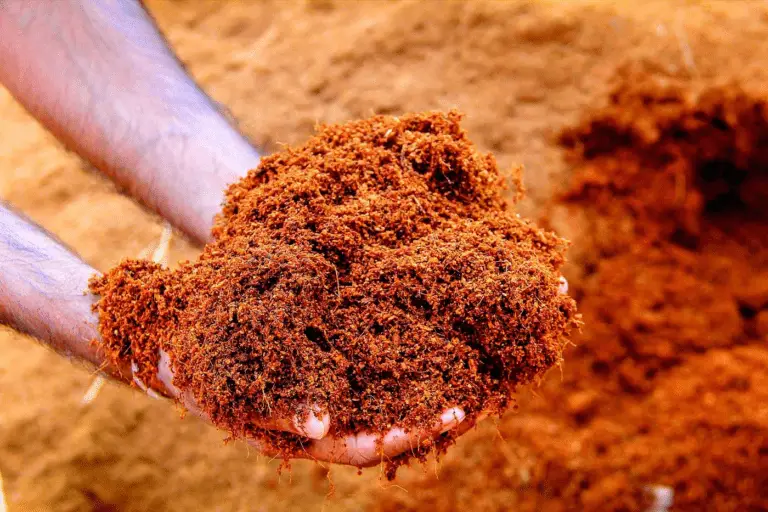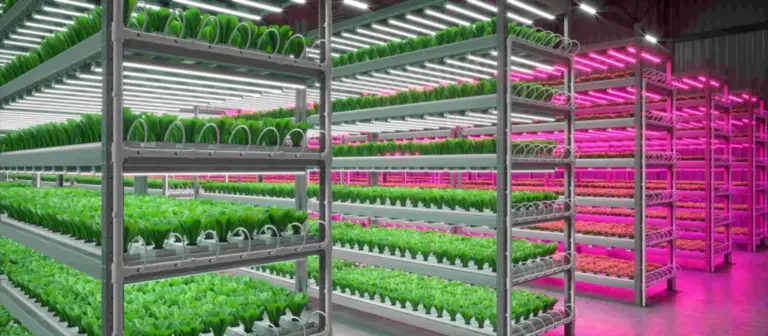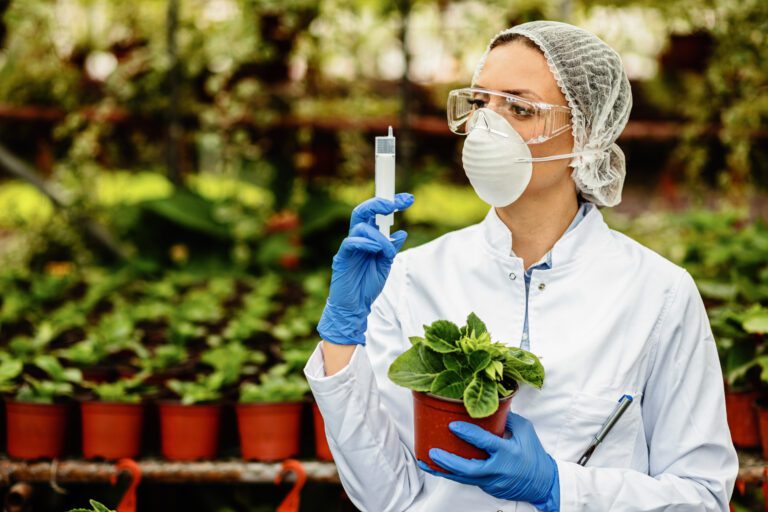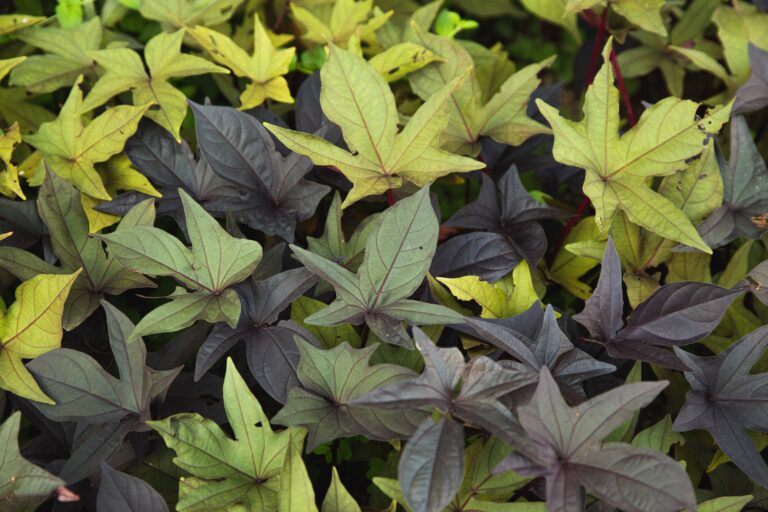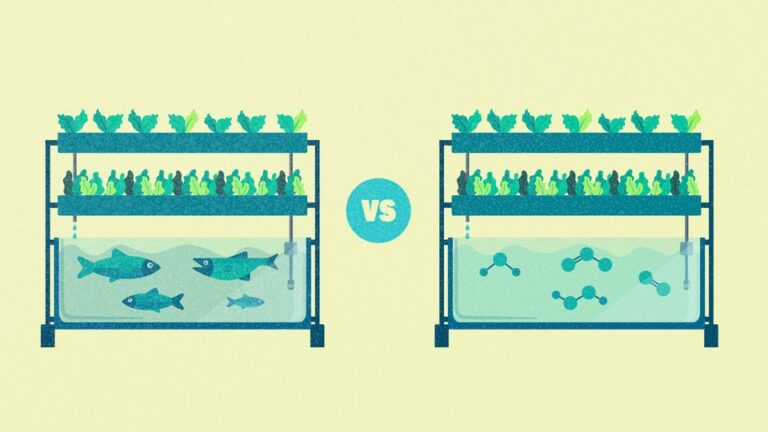Rooftop Hydroponics: 10 Tips to Make Your Garden Thrive
Table of Contents
Benefits of Rooftop Hydroponics
Hydroponic gardening has gained significant popularity in recent years, and one of the key advantages of this method is its suitability for rooftop gardens. By embracing rooftop hydroponics, gardening enthusiasts can unlock numerous benefits that traditional soil-based gardening cannot offer.
Firstly, rooftop hydroponics allows for efficient use of space, making it ideal for urban dwellers who have limited gardening areas. By eliminating the need for soil, plants can be grown vertically, maximizing the available rooftop area. This space efficiency enables gardeners to cultivate a wide variety of plants, from leafy greens and herbs to fruits and vegetables, even in a small rooftop space.
Secondly, rooftop hydroponics promotes water conservation. This method employs a recirculating system that allows for the reuse of water, minimizing wastage. Compared to traditional soil gardening, where water can be lost through evaporation or absorption, hydroponics ensures that water is used more efficiently and effectively, reducing water consumption significantly.

Furthermore, rooftop hydroponic gardens take advantage of the natural sunlight, enhancing the growth of plants. As rooftops are often exposed to full sunlight for extended periods, plants in hydroponic systems receive ample light, leading to healthier and more vigorous growth. This not only results in better crop yields but also provides gardens with an opportunity to harness renewable energy for plant photosynthesis.
In addition to these benefits, rooftop hydroponics offers greater control over pests and diseases. As plants are grown in a controlled environment, the risk of infestations can be minimized, reducing the need for harmful pesticides. This not only benefits the environment but also yields cleaner and healthier produce.
Rooftop hydroponics is a dynamic and innovative solution in modern gardening. By embracing this technique, gardening enthusiasts can enjoy the advantages of efficient space utilization, water conservation, enhanced plant growth, and improved pest management. With these benefits in mind, it is clear why rooftop hydroponics is becoming an increasingly popular choice for green-thumbed individuals in urban areas.
Understanding Hydroponic Gardening
Hydroponic gardening is a soilless method of growing plants, which allows for maximum control over the growing conditions. Instead of relying on traditional soil, hydroponic systems use water, nutrients, and an inert medium to support plant growth. This method offers numerous benefits, making it a popular choice among gardening enthusiasts.
One of the main advantages of hydroponic gardening is its ability to conserve water. Traditional soil-based gardening often results in water wastage due to evaporation and inefficient absorption. In contrast, hydroponic systems recirculate the water, minimizing water usage. Research has shown that hydroponic gardens can use up to 90% less water compared to traditional gardening methods. This not only helps to conserve this valuable resource but also reduces the overall environmental impact of gardening.
Moreover, hydroponic gardening provides precise control over nutrient delivery to plants. By directly supplying the essential nutrients in the right proportions, plants can thrive and grow optimally. This targeted approach minimizes the risk of nutrient deficiencies or imbalances, leading to healthier and more productive plants. Furthermore, the absence of soil-borne diseases often associated with traditional gardening methods reduces the need for chemical pesticides and fungicides, making hydroponics an environmentally friendly option.

Overall, understanding the basics of hydroponic gardening allows gardening enthusiasts to harness its numerous advantages. From water conservation to precise nutrient delivery, this innovative gardening method offers a sustainable and efficient way to grow plants. As we delve deeper into this topic, further sections of this article will explore different aspects of hydroponic gardening, enabling readers to develop a comprehensive knowledge of this exciting practice.
Choosing the Right Location for Your Rooftop Garden
To ensure the success of your rooftop garden, choosing the right location is of utmost importance. When selecting the optimal spot, consider factors such as sunlight exposure, wind patterns, and structural capacity.
Sunlight exposure is vital for the growth and development of your plants. Prioritize a location that receives at least 6-8 hours of direct sunlight each day. Observe the path and intensity of sunlight throughout the day, as neighboring buildings or trees may cast shadows that could impede plant growth.
Additionally, pay attention to wind patterns. Rooftop gardens are often exposed to stronger winds compared to traditional gardens. Strong gusts can damage fragile plants or cause them to dry out quickly. Consider installing windbreakers or selecting a location shielded by taller structures to minimize the impact of wind.
Furthermore, ensure that your rooftop can support the weight of your garden. Consult a structural engineer to evaluate the load-bearing capacity of your rooftop. This step is crucial for ensuring safety and preventing any potential damage to the building. Keep in mind that the weight of the entire garden includes the weight of the plants, containers, grow media, and water.
By carefully assessing sunlight exposure, wind patterns, and the structural capacity of your rooftop, you can confidently identify the perfect location for your hydroponic garden. Remember, a well-chosen location sets the groundwork for a thriving and productive rooftop garden.
• Prioritize a location that receives at least 6-8 hours of direct sunlight each day
• Observe the path and intensity of sunlight throughout the day to avoid shadows from neighboring buildings or trees
• Pay attention to wind patterns and consider installing windbreakers or selecting a location shielded by taller structures
• Consult a structural engineer to evaluate the load-bearing capacity of your rooftop before starting your garden
• Consider the weight of the plants, containers, grow media, and water when assessing the structural capacity
• A well-chosen location sets the groundwork for a thriving and productive rooftop garden
Selecting the Ideal Hydroponic System
When it comes to selecting the ideal hydroponic system for your rooftop garden, there are several factors to consider. Each system has its own advantages and limitations, so it’s important to choose one that aligns with your specific needs and goals.
One popular option is the nutrient film technique (NFT) system, which involves a shallow, sloping channel where a thin film of nutrient-rich water flows over the roots of the plants. This system is known for its efficiency in water and nutrient usage, making it an excellent choice for urban gardeners with limited space and resources. Additionally, the NFT system allows for easy monitoring and adjustment of nutrient levels, providing optimal conditions for plant growth.
Another option is the deep water culture (DWC) system, where the plant roots are suspended in a nutrient solution that is continuously aerated. This system is relatively simple to set up and maintain, making it suitable for beginners. The DWC system provides ample oxygen to the roots, promoting fast and healthy growth. However, it requires more water and nutrients compared to other systems, so careful monitoring is essential to prevent nutrient imbalances.
Ultimately, the choice of hydroponic system depends on your specific circumstances and preferences. Consider factors such as available space, budget, level of expertise, and the types of plants you wish to grow. Research different systems, read reviews, and consult with experienced hydroponic gardeners to make an informed decision. By selecting the ideal hydroponic system, you can create an efficient and thriving rooftop garden.
Essential Nutrients for Rooftop Hydroponics
Essential nutrients are crucial for the growth and development of plants in rooftop hydroponics systems. Hydroponics relies on the precise delivery of nutrients to the plant roots, as they are not able to extract them from soil like in traditional gardening methods. Therefore, understanding the essential nutrients required by plants is essential for successful rooftop hydroponics.
There are six primary essential nutrients that plants need in varying quantities: nitrogen (N), phosphorus (P), potassium (K), calcium (Ca), magnesium (Mg), and sulfur (S). These macronutrients play vital roles in plant metabolism and growth. Nitrogen is essential for leafy growth, while phosphorus promotes root development and flower formation. Potassium helps with overall plant strength and disease resistance. Calcium, magnesium, and sulfur are responsible for various physiological functions, including photosynthesis and enzyme activation.
In addition to the macronutrients, plants also require micronutrients such as iron (Fe), manganese (Mn), zinc (Zn), copper (Cu), boron (B), molybdenum (Mo), and chlorine (Cl) in smaller amounts. These micronutrients are crucial for optimal growth, as they aid in enzymatic reactions and play vital roles in various physiological processes.
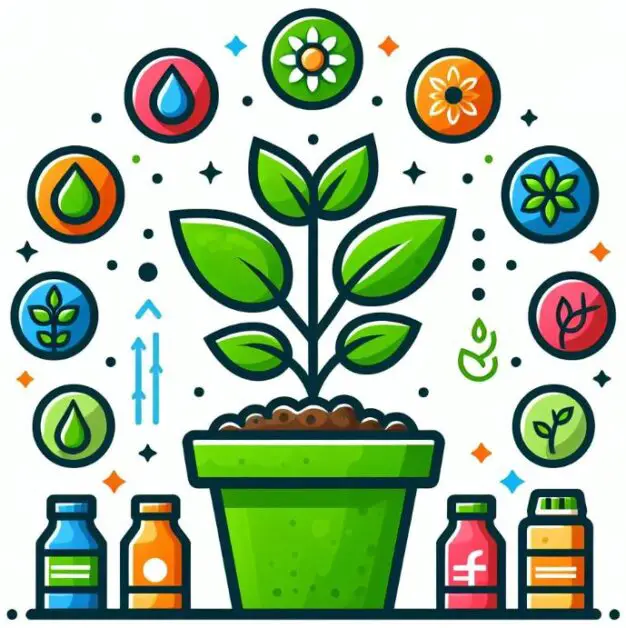
Finding the right balance and concentration of these essential nutrients is vital for the health and productivity of rooftop hydroponic plants. Monitoring nutrient levels regularly and adjusting the nutrient solution accordingly is necessary to ensure the plants receive the necessary elements for their growth. By providing plants with the essential nutrients they require, gardeners can foster healthy and thriving plants in their rooftop hydroponics systems.
Maintaining Proper pH Levels in Your Hydroponic Garden
Maintaining proper pH levels in your hydroponic garden is essential for the optimal growth and development of your plants. pH is a measure of the acidity or alkalinity of a solution, and different plants thrive in specific pH ranges. In hydroponics, where plants are grown without soil and rely on nutrient-rich water, it is crucial to monitor and adjust the pH levels regularly.
The ideal pH range for most hydroponic plants is between 5.5 and 6.5. This slightly acidic pH range provides the optimal conditions for nutrient uptake and absorption. When the pH deviates from this range, it can hinder the plants’ ability to absorb essential nutrients, leading to nutrient deficiencies or toxicities. Monitoring and maintaining the proper pH levels will ensure that your plants receive the necessary nutrients in the right proportions, promoting healthy growth and maximizing yield.
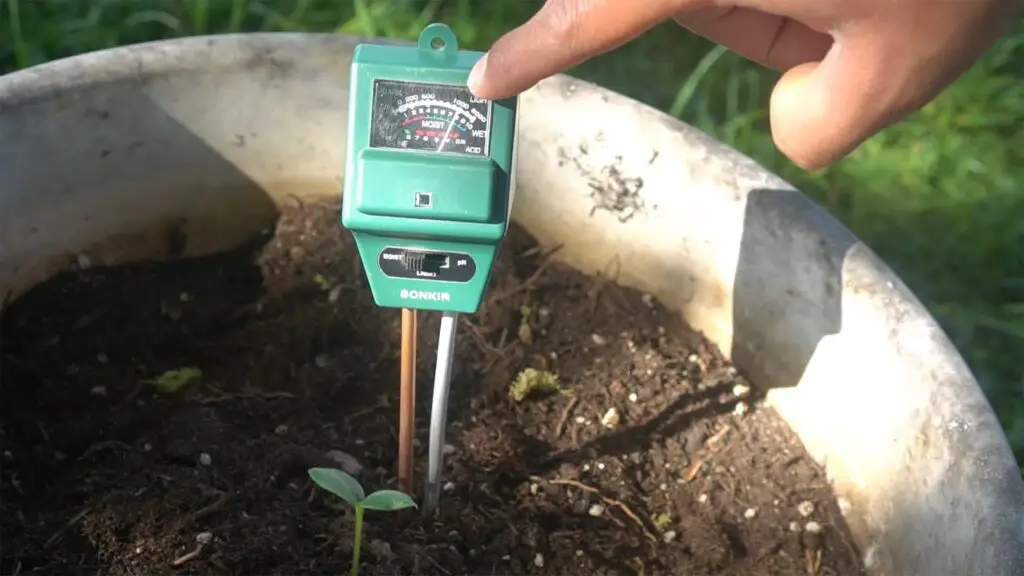
One way to monitor the pH levels in your hydroponic system is by using a pH meter or pH test strips. These tools allow you to measure the pH of your nutrient solution accurately. If you find the pH deviating from the ideal range, adjustments can be made by adding pH up or pH down solutions. pH up raises the pH, while pH down lowers it. It is important to make gradual adjustments and regularly recheck the pH to avoid drastic swings that could shock the plants. By keeping the pH within the recommended range, you will provide your hydroponic plants with the optimal conditions they need to thrive.
Managing Light and Temperature for Optimal Growth
Light and temperature are two crucial factors that significantly impact the growth and development of plants in a hydroponic garden. Proper management of these variables is essential to ensure optimal growth and maximize productivity.
When it comes to light, choosing the right type and intensity is crucial. Most plants require a specific spectrum of light for photosynthesis, which is the process that enables plants to convert light energy into chemical energy. LED grow lights are a popular choice for hydroponic systems due to their energy efficiency and customizable light spectrum. By adjusting the light intensity and duration, you can mimic the natural sunlight conditions that your plants need for healthy growth.
Temperature regulation is equally important in hydroponics. Different plants have different temperature preferences, but generally, a temperature range between 65°F to 75°F (18°C to 24°C) is considered ideal for most crops. Maintaining optimal temperature ensures efficient nutrient uptake and metabolic processes, leading to healthier and more vigorous plants. Monitoring the temperature and using cooling or heating systems, such as fans and heaters, can help you maintain the desired temperature range in your hydroponic setup.
Watering and Nutrient Delivery Systems in Hydroponics
Watering and nutrient delivery systems are crucial components of hydroponic gardening that ensure plants receive the water and nutrients they need to thrive. Unlike traditional soil-based gardening, hydroponics relies on a controlled environment where plants grow in nutrient-rich water solutions. To effectively deliver water and nutrients to the plants, there are several popular methods used in hydroponic systems.
One common method is the drip irrigation system, which involves delivering water and nutrients directly to the base of each plant through a network of tubes and emitters. This method provides a steady and controlled flow of water, ensuring that the plants receive a consistent supply of moisture and nutrients. Another popular system is the flood and drain method, where plants are periodically flooded with nutrient solution and then drained, allowing the roots to absorb the necessary nutrients. This system helps to oxygenate the root system and stimulates healthy root growth.
In addition to these systems, there are also aeroponic systems that mist the plant roots with nutrient solution, deep water culture systems where the plant roots are suspended in a nutrient solution, and nutrient film technique systems where a thin film of nutrient-rich water flows continuously over the roots. Each system has its advantages and considerations, and selecting the appropriate watering and nutrient delivery system will depend on factors such as the type of plants being grown, the available space, and the resources at hand.
Preventing and Managing Pest Infestations in Rooftop Hydroponics
Pest infestations can be a challenging issue to deal with in any garden, and this holds true for rooftop hydroponics as well. However, with the right preventive measures and effective management techniques, it is possible to keep pests at bay and ensure the health and productivity of your hydroponic plants.
One of the first steps in preventing pest infestations is maintaining a clean and hygienic growing environment. Regularly remove any dead leaves, decaying plant matter, or debris from your hydroponic system. These can serve as breeding grounds for pests and can quickly escalate the problem if not addressed promptly.
| Pest Type | Prevention | Management |
|---|---|---|
| Aphids | – Regular inspection | – Beneficial insects |
| – Insecticidal soap/neem oil | – Isolate infected plants | |
| Whiteflies | – Sticky traps | – Insecticidal soap/neem oil |
| – Natural predators (parasitic wasps) | – Prune/remove infested leaves | |
| Spider Mites | – Clean, dust-free environment | – Water spray |
| – Reflective mulch | – Neem oil, insecticidal soap | |
| – Predatory mites | – Quarantine and treat new plants | |
| Fungus Gnats | – Allow medium to dry between watering | – Yellow sticky traps |
| – Well-draining medium | – Beneficial nematodes, soil-dwelling predators |
Additionally, it is crucial to practice strict hygiene and sanitation protocols. Disinfect all tools, equipment, and containers used in your hydroponic system to eliminate any potential sources of contamination. This will help prevent the introduction and spread of pests in your garden.
Furthermore, implementing a strict monitoring system can enable early detection of any pest issues. Regularly inspect your plants for signs of infestation, such as discoloration, wilting, or the presence of pests themselves. If you notice any abnormalities, take immediate action to identify the pest and apply targeted solutions, such as biological controls or organic insecticides.
By taking these preventive and management measures, you can effectively control and manage pest infestations in your rooftop hydroponics, ensuring the healthy growth and abundant harvest of your plants. Stay tuned for more tips on maintaining a thriving rooftop hydroponic garden.
Pruning and Training Techniques for Hydroponic Plants
Pruning and training are essential techniques in hydroponic gardening that help promote healthier growth and maximize the yield of your plants. By selectively removing certain parts of the plant, you can redirect its energy towards producing more fruitful harvests.
One common pruning technique used in hydroponics is known as “pinching.” This involves gently squeezing the tip of the plant’s stem between your thumb and forefinger to remove the growing tip. By doing this, you encourage the plant to branch out and develop more side shoots, resulting in a bushier and more productive plant. Pinching is particularly beneficial for plants like tomatoes, peppers, and herbs that tend to grow tall and leggy.
Training techniques, on the other hand, involve manipulating the plant’s growth pattern to optimize its exposure to light and airflow. One popular method is the use of trellises or stakes to support the plants as they grow. By tying the stems to these structures, you can prevent them from bending or breaking under the weight of the fruits or foliage. Additionally, training the plants to grow vertically maximizes the use of space and allows for better light penetration, which further enhances their overall health and productivity. Expert gardeners often employ various training techniques like the use of trellis netting or plant clips to guide the plants’ growth and shape them according to their desired form.
In conclusion, pruning and training techniques offer numerous advantages in hydroponic gardening. By utilizing these methods, you can help your plants develop into robust and prolific producers, ensuring a bountiful harvest. Incorporating these techniques into your hydroponic system will not only enhance the overall aesthetics of your garden but also optimize plant health and ultimately increase the yield of your produce.
Harvesting and Storage of Hydroponic Produce
Harvesting and storage are critical steps in the process of hydroponic gardening, as they ensure that you can enjoy fresh, nutritious produce year-round. When it comes to harvesting hydroponic crops, timing is everything. Each plant has its own unique growth cycle, and it is important to monitor the development closely. As soon as the produce reaches its peak maturity, it should be harvested promptly to ensure optimal flavor and nutritional content.
To harvest hydroponic crops, gently remove them from the growing medium using clean, sharp tools to minimize damage. It is crucial to handle the produce with care to avoid bruising or crushing, which can lead to decay during storage. Additionally, take note of any specific guidelines for each crop type, as harvesting techniques can vary. For example, leafy greens like lettuce can be harvested by cutting the outer leaves, while vine crops like tomatoes may require pruning shears to remove the entire fruit cluster.
After harvesting, proper storage is essential to maintain the quality and freshness of your hydroponic produce. Before storing, ensure that the harvested crops are clean and dry to prevent the growth of mold or bacteria. Depending on the crop, there are different storage options available. Leafy greens, such as kale or spinach, can be stored in airtight containers or plastic bags in the refrigerator to preserve their crispness. On the other hand, root vegetables like carrots or radishes can be stored in a cool, dark place with high humidity to prevent wilting. It is important to regularly inspect the stored produce and promptly remove any damaged or spoiled items to prevent them from affecting the quality of the rest.
By following proper harvesting and storage techniques, you can enjoy the fruits of your hydroponic labor for an extended period. Not only will you have access to fresh, healthy produce, but you will also have the satisfaction of knowing that you are maximizing the benefits of your hydroponic garden. So, get ready to harvest, store, and savor the bounty of your rooftop hydroponic oasis!
Troubleshooting Common Issues in Rooftop Hydroponics
One of the most common issues that rooftop hydroponic gardeners face is poor nutrient uptake by plants, resulting in stunted growth or yellowing leaves. This can be attributed to several factors, including imbalances in nutrient concentrations, inadequate root zone oxygenation, or improper pH levels. To troubleshoot this problem, it is crucial to regularly monitor the nutrient solution’s pH and adjust it within the optimal range for the specific crop being grown. Nutrient deficiencies or excesses can be identified by analyzing plant symptoms and conducting regular nutrient solution testing. In cases of poor oxygenation, ensuring proper aeration of the nutrient solution through the use of air pumps or adding hydrogen peroxide can be effective.
Another common issue in rooftop hydroponics is the proliferation of pests and diseases. Due to the controlled environment and close proximity of plants, pests like aphids, whiteflies, or spider mites can quickly infest the garden and cause significant damage. Regular inspection of plants for signs of pest presence, such as holes in leaves, sticky residue, or wilting, is essential for early detection. Integrated Pest Management (IPM) techniques, like introducing beneficial insects or applying organic insecticides, can help manage pest populations effectively without harming the plants or the environment. Employing good sanitation practices, such as removing dead leaves or debris, can also thwart the establishment of diseases caused by fungi or bacteria. Regular crop rotation and selecting disease-resistant varieties can further prevent the recurrence of fungal or bacterial infections. By addressing these common issues promptly and implementing preventive measures, rooftop hydroponic gardeners can ensure healthy and thriving plants throughout their growing season.
Maximizing Space Efficiency in Your Rooftop Garden
To maximize space efficiency in your rooftop garden, it is essential to carefully plan and utilize every inch of available space. One effective technique is vertical gardening, which involves growing plants upwards instead of outwards. By utilizing trellises, walls, and hanging baskets, you can easily grow crops such as tomatoes, cucumbers, and beans vertically, saving valuable ground space.
Additionally, intercropping or companion planting is another strategy to make the most of your rooftop garden. This method involves planting different crops together that benefit each other by either repelling pests, attracting beneficial insects, or enhancing nutrient absorption. For example, pairing basil with tomatoes not only provides a flavor combination in your recipes but also deters pests that harm tomato plants. Similarly, planting lettuce with carrots helps in weed suppression and optimizes space usage.
To further optimize space, consider using modular and stackable hydroponic systems. These systems allow you to grow plants in layers, maximizing vertical space while providing a controlled environment for optimal growth. There are various types of hydroponic systems available, including nutrient film technique (NFT), deep water culture (DWC), and aeroponics. Each system has its own set of advantages and considerations, so it’s crucial to research and select the one that suits your specific needs and objectives.
By implementing these space-saving techniques and utilizing innovative hydroponic systems, you can create a highly productive and efficient rooftop garden. Not only will you be able to grow a wide variety of crops, but you will also make the most of limited space, allowing you to enjoy the benefits of fresh and healthy produce right from your own rooftop.
Incorporating Companion Planting in Hydroponic Systems
Companion planting is a valuable technique that can greatly enhance the productivity and overall health of your hydroponic system. By strategically growing different plant species together, you can create a mutually beneficial environment where each plant contributes to the success of the others.
One of the key benefits of companion planting in hydroponics is pest control. Certain plants, such as marigolds, lavender, and basil, release natural compounds that repel pests like aphids, whiteflies, and spider mites. By interplanting these pest-repellent plants with your main crops, you can effectively reduce the risk of infestations and the need for chemical pesticides. Additionally, some plants attract beneficial insects like ladybugs, lacewings, and bees, which can help pollinate your plants and further control pests.
Another advantage of companion planting is nutrient management. Different plants have different nutrient requirements, and by pairing plants with complementary needs, you can maximize the efficiency of your hydroponic system. For example, nitrogen-fixing plants like legumes can enrich the air and water with nitrogen, benefiting neighboring plants that require higher nitrogen levels. Similarly, plants with deep root systems can help prevent nutrient leaching by absorbing excess nutrients and making them available to other shallower-rooted plants.
When incorporating companion planting in your hydroponic system, it is crucial to consider factors such as light requirements, growth rates, and compatibility between plant species. As with any gardening practice, proper planning and research are essential for success. By harnessing the power of companion planting, you can create a harmonious and productive hydroponic garden that thrives naturally and efficiently.
Sustainable Practices in Rooftop Hydroponics.
Sustainable practices are essential in rooftop hydroponics as they promote environmental responsibility and long-term viability. One key sustainable practice is the use of renewable energy sources to power the hydroponic systems. By utilizing solar panels or wind turbines, gardeners can reduce their reliance on fossil fuels, minimize their carbon footprint, and contribute to a cleaner and greener future.
Another sustainable practice is water conservation. Hydroponic systems already use significantly less water compared to traditional soil-based gardens, but there are additional techniques to further reduce water usage. Implementing techniques such as recirculating nutrient solutions, capturing and reusing runoff water, and utilizing water-saving technologies like drip irrigation or misting systems can significantly minimize water waste in rooftop hydroponics. This not only conserves a precious resource but also lowers water costs for gardeners.
Moreover, practicing responsible waste management is crucial in sustainable rooftop hydroponics. Organic matter from pruned plants or harvested produce can be composted and used as nutrient-rich soil amendments. Utilizing biodegradable or recyclable materials for constructing hydroponic systems and choosing environmentally friendly pest management methods are further steps towards sustainability. Incorporating these sustainable practices in rooftop hydroponics not only benefits the environment but also ensures the continued growth and success of urban gardening endeavors.
What are the main benefits of rooftop hydroponics?
Rooftop hydroponics offer several benefits, including efficient use of space, reduced water usage, no soil erosion, year-round cultivation, and the ability to grow a wide variety of plants.
How does hydroponic gardening work?
Hydroponic gardening is a method of growing plants without soil. Instead, plants are grown in nutrient-rich water solutions that are delivered directly to their roots. This allows for more efficient nutrient uptake and faster growth.
How do I choose the right location for my rooftop garden?
When choosing a location for your rooftop garden, consider factors such as sunlight exposure, wind conditions, weight-bearing capacity of the roof, and accessibility to water and electricity sources.
What factors should I consider when selecting an ideal hydroponic system?
Factors to consider when selecting a hydroponic system include the size of your rooftop garden, the types of plants you want to grow, your budget, and your level of expertise in hydroponic gardening.
What are the essential nutrients needed for rooftop hydroponics?
The essential nutrients needed for rooftop hydroponics include nitrogen, phosphorus, potassium, calcium, magnesium, and various micronutrients. These nutrients are typically provided through nutrient solutions.
How do I maintain proper pH levels in my hydroponic garden?
To maintain proper pH levels in your hydroponic garden, regularly monitor the pH of your nutrient solution and adjust it using pH-up or pH-down solutions as needed. The ideal pH range for most plants is between 5.5 and 6.5.
How can I manage light and temperature for optimal growth in rooftop hydroponics?
To manage light and temperature in rooftop hydroponics, use artificial grow lights to supplement natural sunlight, ensure proper ventilation and air circulation, and use shading techniques to prevent overheating during hot weather.
What are the watering and nutrient delivery systems used in hydroponics?
Common watering and nutrient delivery systems used in hydroponics include drip irrigation, nutrient film technique (NFT), ebb and flow systems, and deep water culture (DWC). These systems ensure that plants receive an adequate supply of water and nutrients.
How can I prevent and manage pest infestations in rooftop hydroponics?
To prevent and manage pest infestations in rooftop hydroponics, practice good hygiene, regularly inspect plants for signs of pests, use biological controls like beneficial insects, and, if necessary, use organic pest control methods.
What are the pruning and training techniques used for hydroponic plants?
Pruning and training techniques used for hydroponic plants include removing dead or diseased leaves, trimming excessive growth, and training plants to grow in a desired shape or direction using trellises, stakes, or pruning techniques.
How should I harvest and store hydroponic produce?
Harvest hydroponic produce when it reaches maturity and follow specific guidelines for each plant type. Store hydroponic produce in a cool, dry place or use preservation methods like canning or freezing to extend its shelf life.
What are some common issues in rooftop hydroponics and how can I troubleshoot them?
Common issues in rooftop hydroponics can include nutrient deficiencies, pH imbalances, temperature fluctuations, and pest or disease problems. To troubleshoot these issues, closely monitor plant health, adjust nutrient solutions or pH levels, and address pest or disease issues promptly.
How can I maximize space efficiency in my rooftop garden?
To maximize space efficiency in a rooftop garden, consider vertical gardening techniques, such as using trellises or vertical hydroponic systems, and choose compact plant varieties that take up less space.
How can I incorporate companion planting in my hydroponic system?
Companion planting in a hydroponic system involves growing compatible plant species together to create a mutually beneficial environment. Research companion planting combinations for hydroponics and consider factors such as plant compatibility, growth rates, and nutrient needs.
What sustainable practices can I implement in rooftop hydroponics?
To practice sustainability in rooftop hydroponics, use organic nutrient solutions, recycle water, implement water-saving measures, use renewable energy sources, and consider composting organic waste. These practices can help reduce environmental impact and promote long-term sustainability.

Pallavi Gupta is a burgeoning writer at SouthElMonteHydroponics, blending her passion for data analysis with a keen interest in biotechnology. Currently pursuing a Bachelor’s in Biotechnology at Amity University, Pallavi delves into the intricacies of life sciences while gaining hands-on experience in the exciting world of data analysis. Her unique background provides a fresh perspective on hydroponic farming, as she explores the intersection of biotechnology and sustainable agriculture. Through her writing, Pallavi aims to bridge the gap between data-driven insights and innovative farming practices, inspiring others to harness technology for a greener future.

